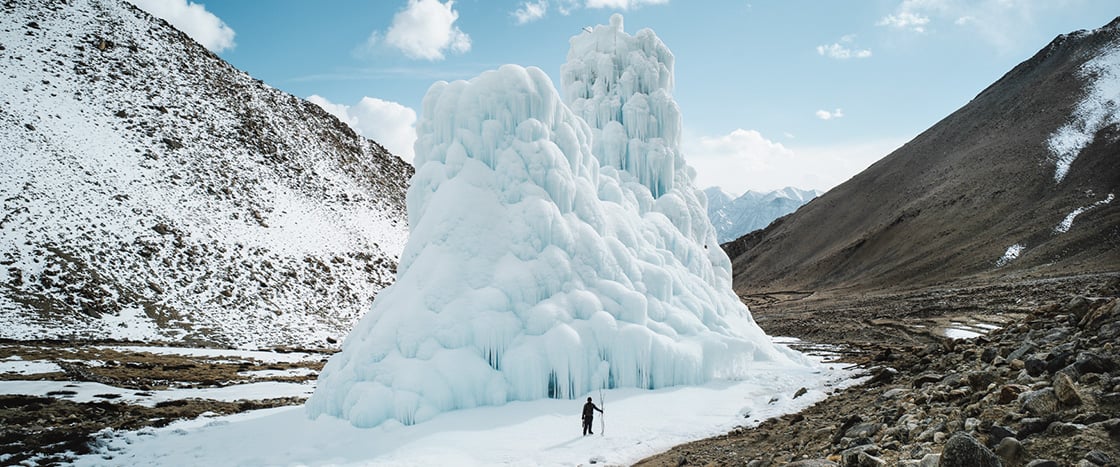The Himalayas, in Central Asia, are the world’s tallest mountains. Tucked among them is a mostly flat valley in northwestern India. This region is called Ladakh (lah-DAHK). There, a surprising sight juts up from the land: giant cones of ice!
These ice towers didn’t form naturally. They were built to solve a problem. People in Ladakh were running out of water. Between 2007 and 2012, droughts forced families to flee the village of Kulum. Other Ladakh villages were also facing water shortages.
The Himalayas are the world’s tallest mountains. They’re found in Central Asia. Among them is a mostly flat valley. It’s in northwestern India. This area is called Ladakh (lah-DAHK). There, surprising objects jut up from the land. They are giant cones of ice!
These ice towers didn’t form naturally. They were built to solve a problem. People in Ladakh were running out of water. Droughts forced families to flee the village of Kulum. This happened between 2007 and 2012. Other Ladakh villages also had too little water.

